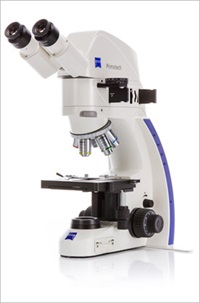Members Login

Channels
Special Offers & Promotions
New Imaging Solution for Industry and Education
Easily Connect Material Laboratories with ZEISS Primotech
 ZEISS introduces a new imaging system for material analysis at the Laser World of Photonics China 2014 trade show in Shanghai. ZEISS Primotech is used both in industrial quality control as well as in the education of geologists and mineralogists. In routine applications, customers can quickly and reproducibly analyze their products within the production process, in an educational setting, Primotech and the iPad imaging app Matscope transform classical learning environments into digital classrooms.
ZEISS introduces a new imaging system for material analysis at the Laser World of Photonics China 2014 trade show in Shanghai. ZEISS Primotech is used both in industrial quality control as well as in the education of geologists and mineralogists. In routine applications, customers can quickly and reproducibly analyze their products within the production process, in an educational setting, Primotech and the iPad imaging app Matscope transform classical learning environments into digital classrooms.
The integrated camera and various interfaces make it possible to connect the system to additional microscopes, printers, or other devices. The app allows the user in the laboratory to view all the images from the connected microscopes in the room and display them using a projector. This means all users can view the same image at the same time, enhancing communication. Matscope is easy to use, makes transferring images to PCs extremely simple, and offers important measuring tools for material analysis. Matscope makes additional measuring tools available for certain applications, such as the inspection of circuit board traces, which increase throughput. Users can easily create reports using Matscope and send them via e-mail.
The encoded nosepiece turret, which is unparalleled in this class of devices, automatically recognizes the attached objective and adjusts the indicated scalings in the image, reducing sources of error. The system is offered in four stand variations. This means customers can configure a solution for almost any application – whether in the electronics or printed circuit board industry, mineralogy, or the analysis of fossil fuel resources. The large sample space allows users to analyze samples up to 34 mm in size. Simultaneous reflected light and transmitted light illumination make it possible to view both transparent and non-transparent materials with one device. In addition, thanks to polarization contrasting, the device can also be used to analyze birefringent structures.
Media Partners


